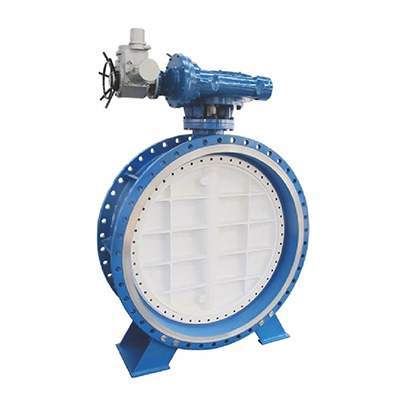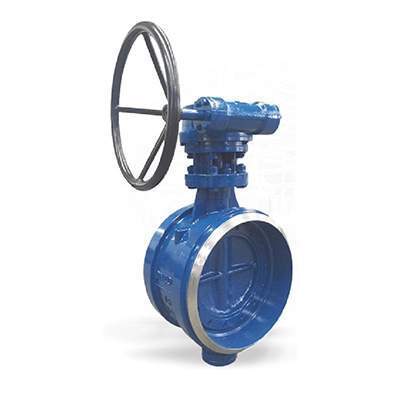Welcome to My Blog!
Before we dive into the content, if you’re interested in our products or have any questions, please feel free to visit our Contact Us page on the website. Our team is ready to assist you with inquiries, orders, or any support you may need.
Now, let’s get started on our journey together. I hope you find the content here insightful, engaging, and valuable.
Introduction

Butterfly valves are a widely used type of quarter-turn valve that provide efficient control of liquid and gas flow in pipelines. These valves are recognized for their compact design, cost-effectiveness, and ability to handle large volumes with minimal pressure drop. Butterfly valves have been in use since the early 20th century and have undergone continuous improvements to meet the growing demands of industrial, commercial, and municipal systems.
Butterfly valves are commonly found in water treatment plants, HVAC systems, chemical processing facilities, and food and pharmaceutical industries. Understanding the different butterfly valve types is essential for engineers, plant operators, and procurement teams to ensure the right valve is selected for each specific application.
Key Features of Butterfly Valves
Butterfly valves consist of four main components: the disc, valve body, stem, and sealing element. The disc is the core component that rotates 90 degrees to either allow or block fluid flow. The valve body connects the valve to the pipeline, while the stem links the actuator or manual handle to the disc. Seals, made of rubber, PTFE, or metal, prevent leakage and ensure long-term reliability.
Materials used for butterfly valves include stainless steel, carbon steel, cast iron, PVC, and reinforced polymers. This variety allows them to operate effectively in diverse environments, from corrosive chemical pipelines to high-temperature steam lines. Sizes range from small valves used in domestic HVAC systems to industrial-scale valves exceeding one meter in diameter.
Key features of butterfly valves include:
- Compact, lightweight design
- Fast quarter-turn operation
- Wide range of pressure and temperature ratings
- Versatility in applications
- Multiple actuation options (manual, electric, pneumatic)
How Butterfly Valves Work
The working principle of butterfly valves is straightforward. The disc, positioned in the center of the pipe, rotates to control the flow. When the disc is parallel to the flow, fluid passes freely; when perpendicular, the flow is blocked.
Butterfly valves can be operated manually with a lever or gear, or automatically with electric or pneumatic actuators. Automated systems allow precise flow control and integration with modern industrial control systems. This combination of simplicity and adaptability makes butterfly valves suitable for on/off control as well as throttling applications.
Types of Butterfly Valves
Understanding the main butterfly valve types helps in selecting the appropriate valve for your system.
- Wafer Type Butterfly Valve: Lightweight and cost-effective, this valve fits snugly between two flanges without the need for additional bolts.
- Lug Type Butterfly Valve: Equipped with threaded inserts, allowing the valve to be installed between two flanges independently.
- Flanged Butterfly Valve: Bolted directly to the flanges, providing a strong and reliable connection suitable for higher-pressure systems.
- High-Performance Butterfly Valves: Engineered for extreme pressure, high temperature, and aggressive chemical environments. These valves often feature advanced sealing technology to minimize leakage.
Offset Butterfly Valve Types
Offset butterfly valves improve sealing performance and reduce disc wear. They are classified into three main types:
- Single Offset (Eccentric) Butterfly Valve: The disc is offset from the pipe centerline, reducing contact with the seat and minimizing wear. This type is ideal for moderate pressure applications.
- Double Offset (Double Eccentric) Butterfly Valve: Adds a second offset to further reduce friction during operation, making it suitable for higher pressures and temperatures.
- Triple Offset (Triple Eccentric) Butterfly Valve: Incorporates three offsets, including an inclined seat cone, to achieve near-zero leakage and handle extreme operating conditions. This type is widely used in critical industrial processes.
Knowing the differences between these offset butterfly valve types allows engineers to select valves that match system requirements in terms of pressure, flow control, and chemical compatibility.
Applications of Butterfly Valves
Butterfly valves are versatile and used across multiple industries:
- Water Treatment Systems: Butterfly valves regulate flow in filtration, chemical dosing, and water distribution pipelines.
- Chemical and Petrochemical Industries: Resistant to corrosion and high temperature, high-performance butterfly valves are essential in these environments.
- HVAC Systems: Lightweight wafer and lug type butterfly valves are ideal for regulating airflow and chilled water systems.
- Food and Pharmaceutical Industries: Sanitary butterfly valves with smooth surfaces and hygienic seals prevent contamination.
In addition, butterfly valves are increasingly used in marine, power generation, and oil and gas applications due to their reliability and low maintenance requirements.
Advantages and Limitations of Butterfly Valves
Advantages of butterfly valves include:
- Compact and lightweight, saving installation space
- Cost-effective compared to other valve types
- Quick quarter-turn operation
- Adaptable to multiple industries and applications
- Suitable for large diameter pipelines
Limitations include:
- Soft-seated valves may not be suitable for very high pressure or temperature
- Less precise flow throttling compared to globe valves
- Potential for leakage under extreme conditions
Compared to ball valves and gate valves, butterfly valves offer better space efficiency, faster operation, and lower cost, but with some trade-offs in sealing precision.
Selecting and Purchasing the Right Butterfly Valve

When selecting a butterfly valve, consider factors such as fluid type, operating pressure, temperature, valve size, and actuation method. Soft-seated, metal-seated, and triple offset valves all have unique advantages depending on the application.
High-quality valves comply with international standards such as ISO, API, and ANSI. Recommended brands vary depending on industry needs, and costs range from economical wafer and lug valves to premium triple offset valves designed for critical processes. Regular inspection and maintenance ensure valve longevity and reliable performance.
Conclusion
Butterfly valves play a critical role in controlling flow in various industrial and commercial systems. Understanding the different butterfly valve types, their features, advantages, and ideal applications is crucial for engineers, plant managers, and procurement teams. Whether using single offset butterfly valves, double offset butterfly valves, or triple offset butterfly valves, selecting the right valve ensures system efficiency, reliability, and longevity. High-performance butterfly valves provide additional assurance in demanding applications, making them indispensable in modern industrial operations.
FAQ
What are the different types of butterfly valves?
The main butterfly valve types include wafer, lug, flanged, and high-performance valves. They can also be classified as single offset, double offset, or triple offset depending on their sealing and design.
How does a butterfly valve work?
A butterfly valve controls flow by rotating a disc inside the valve body. When the disc is parallel to the flow, the fluid passes freely; when perpendicular, the flow is blocked.
What is a single offset butterfly valve?
A single offset butterfly valve has its disc offset from the pipe centerline, reducing contact with the seat and minimizing wear. It is suitable for moderate pressure applications.
Which butterfly valve types are ideal for high-pressure applications?
Double offset, triple offset, and high-performance butterfly valves are designed for high-pressure and high-temperature environments, providing better sealing and durability.
How do I choose the right butterfly valve type?
Consider the fluid type, pressure, temperature, size, and actuation method. Selecting the correct butterfly valve type ensures efficient operation, longevity, and compatibility with your system.
Need Help Choosing the Right Butterfly Valve?
If you’re unsure about which butterfly valve type is best for your system or application, our experts are here to guide you. Contact us today for a personalized consultation, and ensure your pipeline or process operates efficiently and reliably. Don’t wait until issues arise—get in touch now to select the perfect butterfly valve for your needs!
